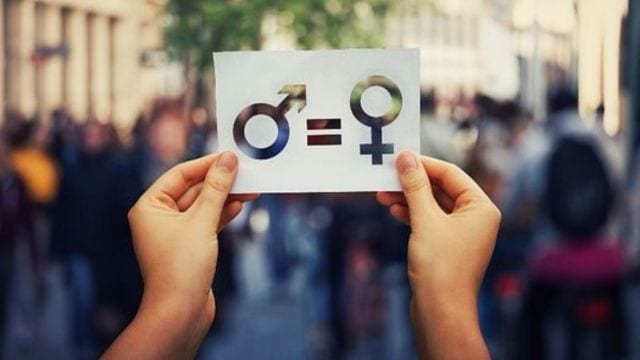 India has closed only 64.1 percent of its gender gap in 2024; check where it stands in the WEF’s Global Gender Gap Report 2024. (Source: Shutterstock)
India has closed only 64.1 percent of its gender gap in 2024; check where it stands in the WEF’s Global Gender Gap Report 2024. (Source: Shutterstock)
Women and girls represent half of the world’s population and, therefore, half of its potential. As the UN rightly puts it, gender equality, besides being a fundamental human right, is essential to achieving peaceful societies with full human potential and sustainable development.
As the fight for gender equality has been a long-standing global challenge, how is the world progressing on it? The World Economic Forum’s (WEF) latest Global Gender Gap Report 2024 findings are a mixed bag.
The gender gap closed at 68.5 per cent in 2024, a slight 0.1 percentage point improvement from the previous year. The global health and survival gender gap has closed by 96 per cent. The educational attainment gap has closed by 94.9 per cent, the economic participation gap has closed by 60.5 per cent, and the political empowerment gap has closed by 22.5 per cent.
However, achieving full gender equality will still require considerable work, as the report finds that it will take 131 years to reach full parity between women and men, which translates into five generations, until the year 2158, beyond the 2030 Sustainable Development Goal (SDG) target.
Not so surprisingly, Europe leads the 2024 regional gender gap rankings, having closed 75% of its gap in 2024, an overall improvement of +6.2 percentage points since 2006, and the Middle East and North Africa rank last among all regions, with a gender parity score of 61.7%. Despite this result, the region has seen an overall positive trajectory since 2006, advancing its gender gap score by +3.9 percentage points.

 The state of gender gaps, by subindex: Check the percentage of the gender gap closed in 2024, corresponding to each of the four subindexes. (Source: WEF)
The state of gender gaps, by subindex: Check the percentage of the gender gap closed in 2024, corresponding to each of the four subindexes. (Source: WEF)
Where does India stand?
Southern Asia ranks seventh among eight global regions, with a gender parity score of 63.7 per cent and an improvement of 3.9 percentage points since 2006, with Bangladesh, for the first time in the region, having achieved a double-digit rank of 99.
In India, economic participation and opportunity for women have seen a slight improvement, with them doing relatively well in the political empowerment parameter (65th) compared to the other indices. However, its overall performance within Southern Asia is particularly concerning as India has closed only 64.1 per cent of its gender gap in 2024, resulting in an overall rank of 129th, marginally lower than 2023’s (127), ahead of only the Maldives and Pakistan.
World’s 10 most gender-equal countries:
Even though no country has achieved full gender parity yet, on a more positive note, the Global Gender Gap Report reveals that out of 146 countries in the world, the top 10 countries have significantly closed the gender gap, inspiring and leading the way forward in terms of gender parity.
Notably, Iceland continues to lead the global rankings with 93.5% of its gender gap closed, maintaining its position as the top-performing economy in the index for over a decade and a half. Out of the remaining nine economies in the top 10, an impressive eight have closed over 80% of their gender gap.
Discover more from CaveNews Times
Subscribe to get the latest posts sent to your email.

























![Exploring the Serene Beauty of Nature: A Reflection on [YouTube video title]](https://cavemangardens.art/storage/2024/04/114803-exploring-the-serene-beauty-of-nature-a-reflection-on-youtube-video-title-360x180.jpg)


























